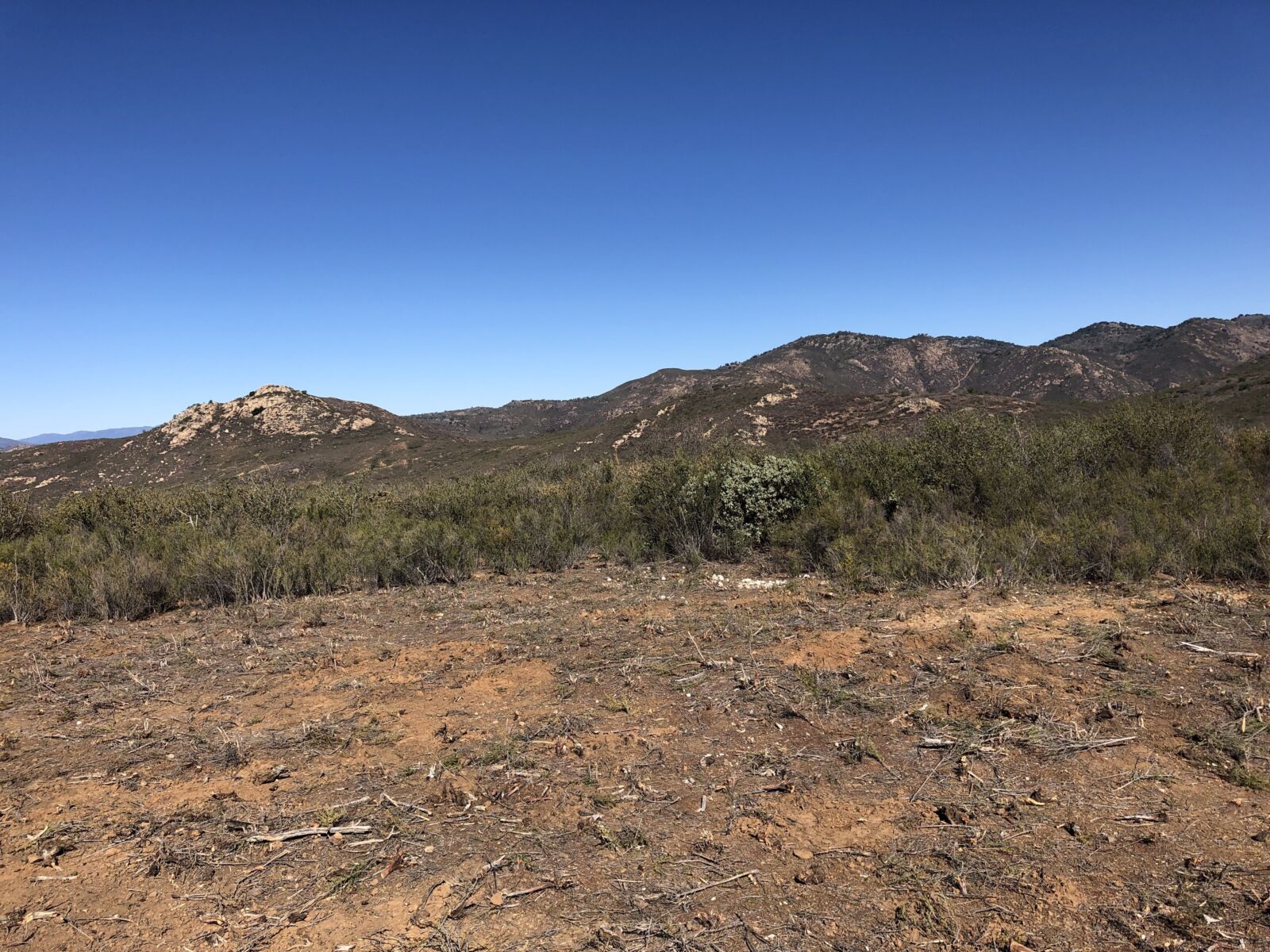The Cha’chaany Hamuk Trailhead Improvement Project will improve recreation access for hikers across San Diego County.
The U.S. Forest Service, in partnership with the National Forest Foundation (NFF), is working to improve public access to the Eagle Peak recommended wilderness area including Eagle Peak and Three Sisters Falls. November 15, 2022, staff from NFF and the Cleveland National Forest (CNF) broke ground on the new Cha’chaany Hamuk Trailhead site, kicking off the project.
The Eagle Peak and Three Sisters Falls trails, both popular recreation sites in the Palomar Ranger District of the CNF, are currently supported by a primitive parking area directly adjacent to Boulder Creek Road. The current “Three Sisters Trailhead” is minimally improved and does not include trash or sanitation facilities. Visitation to the location varies based on the season, but the site can see anywhere from 50 to 400 visitors during weekends. On crowded days, visitors often illegally park along the edge of Boulder Creek Road, restricting resident and emergency vehicle access.
In addition to parking and constricted roadways, visitors continue to expand user-created trails while leaving litter and human waste behind. These activities damage vegetation, cause soil erosion, degrade riparian areas and water quality, and impact the area’s wilderness qualities, reducing the quality and quantity of suitable wildlife habitat.

The Cha’chaany Hamuk Trailhead Improvement Project will be conducted in two phases. The first phase will include constructing a trailhead with hardpacked parking for up to 80 vehicles, including accessible parking spaces and paths to site features, and improving and widening the roadway to the trailhead. The improvements will also include installing vault toilet buildings, trash and recycling containers, accessible picnic tables, interpretive and information signage, shade structures, and a new trail segment connecting the trailhead to the trail.
Site preparation for phase two involves grading an emergency support site that includes water storage for wildland fire suppression, an emergency helicopter landing zone, and parking for emergency vehicles. Phase one of this project was partly funded through a partnership with the NFF, the CNF, and the Wildlife Conservation Board Public Access Grant Program. Phase two was financed with a grant from the San Diego River Conservancy.
The new trailhead and emergency support site will each be accessed from Cedar Creek Spur Road rather than Boulder Creek Road. Access to the primitive trailhead from Boulder Creek Road will be blocked, and portions will be either rehabilitated or used for the emergency support site during phase two of the project. “This trailhead and emergency support site are the latest steps we are taking to address impacts to natural and cultural resources resulting from the high levels of recreation at these sites. Compromised access along Boulder Creek Road for residents and emergency vehicles has been an ongoing issue that we seek to improve through this and future efforts,” said Palomar District Ranger Amy Reid.
With the increase in visitation on our National Forests, projects like the Cha’chaany Hamuk Trailhead Improvement Project are critical to ensuring there is sustainable and safe access to communities across San Diego County. The NFF is thrilled to partner with the Cleveland National Forest and Wildlife Conservation Board to improve access at this popular recreation site
During the planning phase, the CNF invited the Kumeyaay Tribes, Bands and Nations to assist with naming the new trailhead. The Kumeyaay Diegueño Land Conservancy recommended the name Cha’chaany Hamuk, meaning “Sisters Three,” which was adopted as the name of the new trailhead.
Palomar District Ranger Amy Reid said, “as a part of this effort, we seek to recognize and honor the people who have inhabited these lands and waterways since time immemorial. “We are grateful to be working with NFF, the Wildlife Conservation Board, the San Diego River Conservancy and all of our tribal partners to provide safe, sustainable recreation access into the future.”

